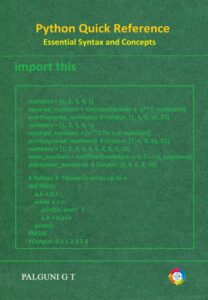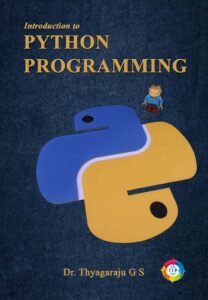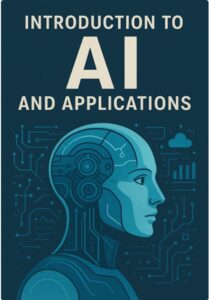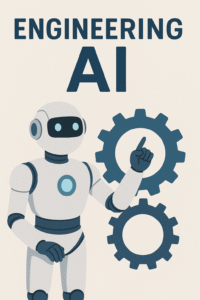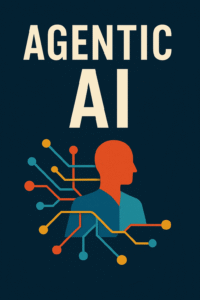1. Introduction
In the rapidly evolving landscape of Artificial Intelligence (AI), large language models (LLMs) have emerged as game-changers, pushing the boundaries of what was once thought possible. These powerful models, such as GPT-3, DALL-E, and ChatGPT, have captured the imagination of both the tech industry and the general public with their ability to generate human-like text, images, and even code.
However, to fully harness the potential of these LLMs, a new breed of professionals has risen to the forefront: prompt engineers. Prompt engineering is the art and science of crafting effective prompts or instructions that guide these models to generate desired outputs. As the demand for AI solutions continues to grow across industries, the role of prompt engineers has become increasingly crucial.
2. Role of a Prompt Engineer
Prompt engineers act as the bridge between humans and LLMs, translating our needs and requirements into a language that these models can understand. Their primary responsibilities include:
- Prompt Design: Creating clear, concise, and context-rich prompts that elicit the desired responses from LLMs.
- Prompt Optimization: Iteratively refining prompts based on model outputs, human feedback, and performance metrics to improve accuracy and quality.
- Prompt Augmentation: Employing techniques such as few-shot learning, chain-of-thought prompting, and prompt embedding to enhance the effectiveness of prompts.
- Prompt Evaluation: Assessing the performance of prompts using human evaluation, automated metrics, and task-specific benchmarks.
- Prompt Curation: Documenting and sharing effective prompts across teams and domains to facilitate knowledge transfer and accelerate progress.
Prompt engineers play a crucial role in shaping the capabilities and outputs of LLMs, ensuring that these powerful models deliver reliable, relevant, and trustworthy results.
3. Skillsets Required for Prompt Engineers
To excel as a prompt engineer, one must possess a unique combination of technical and creative skills. Here are some essential skillsets:
Basics of AI: Prompt engineers need to have a good understanding of AI and its key concepts such as machine learning, natural language processing, data science, and deep learning.
Natural Language Processing (NLP) Expertise: A solid understanding of NLP concepts, language models, and NLP libraries and frameworks is crucial for prompt engineers.
Deep Learning and Transformer Models: The large language models such as GPT, Gemini, LLaMA 2, and others are essentially magnified deep learning models engineered to comprehend and generate natural language. To navigate these models effectively, a solid understanding of deep learning principles is essential.
Programming Skills: Proficiency in programming languages like Python, as well as data manipulation, visualization, and analysis using libraries such as pandas, NumPy, and Matplotlib.
Analytical and Problem-Solving Skills: The ability to break down complex tasks into subtasks, identify required information, and formulate problems in a way that LLMs can understand.
Creative and Communication Skills: Crafting effective prompts requires creativity, critical thinking, and the ability to communicate complex ideas clearly and concisely.
Domain Knowledge: Understanding the subject matter and industry-specific terminologies can greatly enhance the effectiveness of prompts.
Attention to Detail: Prompt engineering often involves subtle tweaks and adjustments, necessitating a keen eye for detail and the ability to identify and address edge cases.
Continuous Learning: Staying updated with the latest research, developments, and best practices in the rapidly evolving field of prompt engineering.
4. Steps to Become a Prompt Engineer
Becoming a proficient prompt engineer requires a combination of theoretical knowledge, practical skills, and continuous learning. Here’s a roadmap to help you embark on this exciting journey:
- Develop a Strong NLP Foundation: Study core NLP concepts, language model architectures, and gain hands-on experience with NLP libraries and frameworks.
- Master Programming Skills: Become proficient in a programming language like Python, and develop expertise in data manipulation, visualization, and analysis.
- Dive into Large Language Models: Understand the inner workings of LLMs, their training paradigms, limitations, and gain practical experience with popular LLM frameworks like TensorFlow, PyTorch, Hugging Face Transformers, and OpenAI’s GPT (Generative Pre-trained Transformer).
- Hone Your Prompt Engineering Skills: Learn how to design effective prompts, refine prompts, augment prompts, and evaluate prompts for various tasks and domains.
- Advanced Prompting techniques: Model prompting encompasses numerous strategies, including zero-shot prompting, one-shot prompting, iterative prompting, among others. By familiarizing yourself with and practicing these prompting techniques, you can elevate your skills as a proficient prompt engineer.
- Hands on with Pretrained Models: To excel in prompt engineering, it’s essential to acquaint yourself with established pre-trained models like GPT-2, GPT-3, BERT, and others. Experiment with various prompts and analyze their responses, gaining insights into their text generation capabilities and identifying any constraints.
- Stay Updated with Latest Research and Developments: Follow academic publications, industry blogs, and participate in online forums and events related to prompt engineering and LLMs.
- Build a Portfolio of Projects: Work on personal or open-source projects involving prompt engineering for different applications, collaborate with others, and document your work.
- Gain Industry Experience (Optional): Consider internships or entry-level positions in companies or research labs working with LLMs and prompt engineering to gain practical experience.
- Continuously Learn and Adapt: Embrace a growth mindset, continuously upskill yourself by taking courses, attending workshops, or pursuing further education in relevant areas to keep up with the rapidly evolving field of prompt engineering.
Contextual Story:
It was a crisp autumn morning when Alex, a young aspiring technologist, sat down at his desk, eager to embark on a new journey. He had heard whispers of a burgeoning field called “Prompt Engineering,” and the prospect of shaping the future of artificial intelligence captivated his imagination.
As he fired up his laptop, Alex stumbled upon an online article that outlined a roadmap for becoming a skilled Prompt Engineer. The piece highlighted the key skills and knowledge required to thrive in this dynamic profession, and Alex knew that this was the path he wanted to pursue.
The first step, the article suggested, was to develop a deep understanding of natural language processing (NLP) and its underlying principles. Alex delved into online courses, research papers, and forums, absorbing the intricacies of language models, text generation, and sentiment analysis. He practiced deconstructing and analyzing various types of text, honing his ability to understand the nuances of human communication.
Next, the roadmap emphasized the importance of becoming proficient in prompt design and optimization. Alex spent countless hours experimenting with different prompts, refining their structure, and observing the outputs generated by various language models. He learned to craft prompts that elicited precise, coherent, and contextually relevant responses, a skill that would prove invaluable in his future work.
As he progressed, Alex recognized the need to stay abreast of the latest advancements in the field. He subscribed to industry newsletters, attended virtual conferences, and engaged with a thriving online community of Prompt Engineers. This exposure not only broadened his knowledge but also connected him with like-minded individuals who shared his passion for the craft.
One of the most crucial aspects of the roadmap, Alex discovered, was the ability to deeply understand the strengths and limitations of language models. He delved into the technical details of model architecture, training data, and biases, equipping himself with the knowledge to identify and mitigate potential pitfalls in prompt design.
As he honed his skills and built a robust portfolio of successful prompt-driven projects, Alex began to receive recognition from industry leaders. Opportunities to collaborate on cutting-edge AI applications and to mentor aspiring Prompt Engineers started to present themselves, fueling his drive to continue learning and innovating.
Looking back on his journey, Alex realized that becoming a Prompt Engineer was not just about mastering a set of technical skills; it was about cultivating a deep appreciation for the nuances of human language and a relentless dedication to pushing the boundaries of what was possible with artificial intelligence. With each step he took, he knew that he was not only shaping his own future but also contributing to the evolution of a field that would profoundly impact the world around him.
5. Conclusion
As AI continues to transform industries and shape our future, the demand for skilled prompt engineers will only increase. By mastering the art of prompt engineering, you can play a pivotal role in unlocking the full potential of LLMs and driving innovation across various domains.
Whether you’re already entrenched in the realm of data or have an ardent enthusiasm for AI, the roadmap to becoming a prompt engineer is an exciting and rewarding journey. With dedication, continuous learning, and a passion for language and technology, you can position yourself at the forefront of this revolutionary field, shaping the future of human-AI interactions.
Embarking on a career as a prompt engineer is not just a professional pursuit; it’s a chance to be part of a transformative movement that is redefining the boundaries of what is possible with AI. So, embrace the challenge, hone your skills, and prepare to leave your mark on the remarkable world of prompt engineering.
Glossary
Large Language Model (LLM): A type of artificial intelligence model that is trained on vast amounts of textual data to generate human-like text, code, or other outputs based on prompts or instructions.
Prompt Engineering: The process of designing and refining prompts or instructions given to large language models to elicit desired responses or perform specific tasks effectively.
Prompt Design: The process of creating clear, concise, and context-rich prompts that guide the language model to generate the desired output.
Prompt Optimization: The iterative process of refining prompts based on model outputs, human feedback, and performance metrics to improve accuracy and quality.
Prompt Augmentation: The use of techniques such as few-shot learning, chain-of-thought prompting, and prompt embedding to enhance the effectiveness of prompts.
Prompt Evaluation: The process of assessing the performance of prompts using human evaluation, automated metrics, and task-specific benchmarks.
Prompt Curation: The documentation and sharing of effective prompts across teams and domains to facilitate knowledge transfer and accelerate progress.
Natural Language Processing (NLP): The field of artificial intelligence that deals with the interaction between computers and humans using natural language, including tasks such as text analysis, language generation, and translation.
Few-shot Learning: A machine learning technique that allows models to learn from a small number of examples or prompts, rather than requiring large amounts of training data.
Chain-of-Thought Prompting: A prompt engineering technique that encourages language models to break down complex problems into a series of reasoning steps, leading to more coherent and explainable outputs.
Prompt Embedding: A technique that converts prompts into numerical representations (embeddings) that can be processed by language models, allowing for more efficient and effective prompt handling.
Domain Knowledge: Expertise and understanding of a specific subject matter or industry, which can help in crafting more effective and relevant prompts for that domain.
Multiple Choice Questions
- What is the primary responsibility of a prompt engineer?
- Developing large language models
- Creating effective prompts for language models
- Optimizing hardware for AI models
- Collecting and cleaning data
- Which of the following is NOT a role of a prompt engineer?
- Prompt design
- Prompt optimization
- Model training
- Prompt evaluation
- What is the process of iteratively refining prompts based on model outputs and feedback called?
- Prompt design
- Prompt optimization
- Prompt augmentation
- Prompt evaluation
- Which of the following techniques can be used to enhance the effectiveness of prompts?
- Few-shot learning
- Chain-of-thought prompting
- Prompt embedding
- All of the above
- What is the primary goal of prompt evaluation?
- Assessing the performance of prompts
- Designing new prompts
- Optimizing model parameters
- Collecting training data
- Which of the following skills is NOT essential for a prompt engineer?
- Natural Language Processing (NLP) expertise
- Programming skills
- Hardware engineering skills
- Creative and communication skills
- What is the importance of domain knowledge for a prompt engineer?
- It helps in designing effective prompts
- It is required for model training
- It is necessary for data collection
- It is not important for prompt engineering
- Which of the following is NOT a step in the roadmap to become a prompt engineer?
- Develop a strong NLP foundation
- Master programming skills
- Design and train language models
- Build a portfolio of projects
- What is the significance of staying updated with the latest research and developments in prompt engineering?
- It helps in improving prompt design skills
- It is required for model training
- It is necessary for data collection
- It is not important for prompt engineering
- Which of the following statements best describes the importance of prompt engineering?
- It is a niche field with limited applications
- It is crucial for unlocking the full potential of large language models
- It is only relevant for a specific industry
- It is a temporary trend that will fade away
References
- Anthropic’s AI Safety resources and publications, including their work on constitutional AI and safe exploration: https://www.anthropic.com/
- “Prompting Guide: Principles and Techniques for Prompt Engineering” by Anthropic: https://www.anthropic.com/index/prompting-guide
- “Language Models are Few-Shot Learners” by OpenAI: https://arxiv.org/abs/2005.14165
- “Constitutional AI: Harmonic Reinforcement Learning for Artificial General Intelligence” by Dario Amodei and Paul Christiano: https://arxiv.org/abs/2212.08073
- “Chain of Thought Prompting Elicits Reasoning in Large Language Models” by Jason Wei et al.: https://arxiv.org/abs/2201.11903
- “Prompt Programming for Large Language Models: Beyond the Few-Shot Paradigm” by Avia Khurdina et al.: https://arxiv.org/abs/2102.07350
- “A Systematic Survey of Prompt Engineering in Large Language Models: Techniques and Applications” by Pranab Sahoo: https://arxiv.org/abs/2402.07927
- “The Prompt Programming Guide” by Dair.ai: https://www.promptingguide.ai/
- “Prompt Engineering” by Lilian Weng: https://lilianweng.github.io/posts/2023-03-15-prompt-engineering/
- “Prompt Engineering: An Introduction” by OpenAI: https://platform.openai.com/docs/guides/prompt-engineering
- “LLM Prompting Guide” by Hugging Face: https://huggingface.co/docs/transformers/main/tasks/prompting
These references cover a range of topics related to prompt engineering, including principles and techniques, few-shot learning, chain-of-thought prompting, prompt programming, prompt tuning, and introductory guides to prompt engineering. They are authored by organizations and researchers at the forefront of prompt engineering and AI safety, such as Anthropic, OpenAI, Dair.ai, Hugging Face, and others working on advancing the field of prompt engineering and responsible AI development.
Tutorials and Learning Resources:
- “Prompt Engineering” by Anthropic: https://docs.anthropic.com/claude/docs/prompt-engineering
- Prompt Engineering Guide: https://www.promptingguide.ai/
- LLM Prompting Guide : https://huggingface.co/docs/transformers/main/en/tasks/prompting
- “Prompt Engineering Tutorial” : https://www.tutorialspoint.com/prompt_engineering/index.htm
- Prompt Engineering Guide : https://learnprompting.org/docs/intro
- “Prompt Engineering ” by OpenAI: https://platform.openai.com/docs/guides/prompt-engineering/strategy-write-clear-instructions
- “Prompt Engineering Guide” by Dair.ai: https://github.com/dair-ai/Prompt-Engineering-Guide
- What is Prompt Engineering: https://cloud.google.com/discover/what-is-prompt-engineering
- Prompt Engineering for Generative AI : https://developers.google.com/machine-learning/resources/prompt-eng
- Generative AI and large language models (LLMs) on Databricks : https://docs.gcp.databricks.com/en/generative-ai/generative-ai.html
- “Prompt Engineering for Language Models” by Databricks: https://databricks.com/blog/2022/12/13/prompt-engineering-for-developing-better-language-models.html
- An Introduction to Large Language Models: Prompt Engineering and P-Tuning : https://developer.nvidia.com/blog/an-introduction-to-large-language-models-prompt-engineering-and-p-tuning/
- “Prompt Engineering for Every One” by Cognitive Class.AI: https://cognitiveclass.ai/courses/prompt-engineering-for-everyone
These courses and tutorials cover various aspects of prompt engineering, including principles, techniques, best practices, and hands-on exercises. They are offered by reputable organizations, such as Coursera, Udacity, Pluralsight, DataCamp, O’Reilly, Deeplearning.ai, Anthropic, Hugging Face, OpenAI, Dair.ai, Google Cloud, Databricks, and Nvidia.
YouTube Tutorials
- How to Become a Prompt Engineer in 2024 | Prompt Engineering Roadmap | Intellipaat
- How to Become a Prompt Engineer | Prompt Engineering Roadmap | Prompt Engineering Course | Edureka
- Master the Perfect ChatGPT Prompt Formula (in just 8 minutes)!
- Prompt Engineering Tutorial – Master ChatGPT and LLM Responses
- AI Engineer Roadmap | How I’d Learn AI in 2024
- Introduction to Prompt Engineering: How to Effectively Use ChatGPT & Other AI Language Models
- Prompt Engineering in Generative AI: Types & Techniques | KodeKloud
- Advanced Prompt Engineering: OpenAI Hackathon


